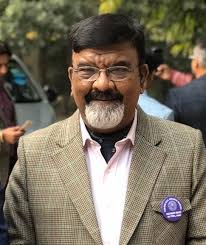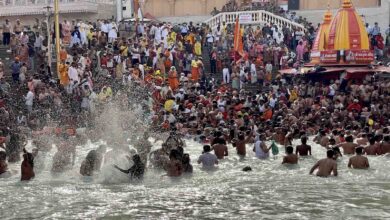Let statecraft replace vicious propaganda

 Sidharth Mishra
Sidharth Mishra
The BJP poll machinery’s aggressive narrative proved to be counterproductive; it’s now time to change the nature of dialogue from confrontation to consensus
The seamless swearing in of Prime Minister Narendra Modi for the third term, given the fractured mandate handed out by voters in the Lok Sabha elections in 2024, must have come as big relief for those who invest in the Indian market. The investor could be a small-time shareholder or a rich corporate professional.
The economic reforms launched by Dr Manmohan Singh, the Finance Minister in the Narasimha Rao Government in 1991, have tumbled on through the regimes of another five Prime Ministers, who followed Rao, including Manmohan Singh himself. The importance of the continuity of these reforms can be gauged from the fact that in the past three decades, it has lifted more than 50 crore Indians out of mortifying poverty.
From the economic point of view, the Narendra Modi Government’s biggest shortcoming during its second term, which had a very strong mandate, was its inability to carry out farm reforms. It faltered in communicating to the farmers the benefits of the new agriculture laws and the profits it could accrue to the farm hands.
The negative narrative perpetuated by the communication machinery of the Modi regime, which was largely taken over by the IT Cell of the Bharatiya Janata Party (BJP), proved to be an impediment not just in the implementation of the farm legislations but also failed to immerse the spirit of Hindu pride in the months following the consecration of the Ram Temple in Ayodhya.
An aggressive narrative, borrowed from the cantankerous television debates and not necessarily backed by facts, on the social media platforms prove to be counterproductive. With the rise of the fact-checking tools, the decisions to let Jawaharlal’s Nehru’s love stories and propaganda of similar genre overshadow the Narendra Modi Government’s achievements proved to be one of the biggest deflating factors in the BJP’s campaign of 2024, with the party falling way short of the halfway mark.
The communication battle on the farm laws, instead of focusing on the merits of the reforms, became a fight between the Hindustanis and Khalistanis. The attempt to paint those opposed to the reforms as espousing the agenda of Balkanisation was ill thought of, and the BJP has paid a heavy price for it electorally not just in Punjab but across the farmlands of the country.
Several other initiatives which could have welded people strongly in the support of the Modi 2.0, got undone by the showing of the brute power of large numbers, not as much on the ground, as in the narratives floated by the establishment’s publicity arm. The whole attitude to run down the ‘Argumentative Indian’, an expression borrowed from the title of the bestseller by Amartya Sen, as anti-national in the event of s/he not agreeing with the Government only helped firm up the anti-Government stand than making them fall in the Government’s line.
The biggest question which must be haunting the BJP leadership is that when the residents of Uttar Pradesh took an “overwhelming” part in the celebration of the consecration of the Ram Temple, why did it not endorse the party as enthusiastically when it came to the electoral battle? Once again, the propaganda machinery only helped turn a happy moment into an instant of loyalty test.
It was seen that handing out an invitation to the Opposition leaders to a ‘quasi-political’ function was to get them to refuse and get branded as ‘anti-Hindu’. No communication expert would ever prepare a model which would spend time in their hour of glory on the rivals. The narrative so floated in the end created a situation where the ‘homecoming’ for Ram Lalla got overtaken by ‘Ayodhya-coming’ of the Opposition leaders.
Today, the BJP Government is perched on the support of Chandrababu Naidu’s Telugu Desam Party and Nitish Kumar’s Janata Dal (United). Both the leaders did not come to Ayodhya but have come to the support of Narendra Modi 3.0. In the past, they have even called the Ramjanambhoomi Movement as a ‘political project’ of the BJP.
The latest narrative of the open denouncement of the voters of Uttar Pradesh by the BJP’s extended family will certainly not find traction with either Kumar or Naidu. The castes and communities who did not vote for the BJP voted for Kumar and Naidu in their respective States.
The call of the hour is to change the nature of the dialogue from confrontation to consensus, not only among the National Democratic Alliance (NDA) partners but among all the stakeholders of India, that is Bharat. The demand of the situation is to push the economic and strategic agenda as statecraft than a tool to demonise and belittling those opposed to the Government.
(The writer is an author and president of the Centre for Reforms, Development & Justice; views are personal.)






